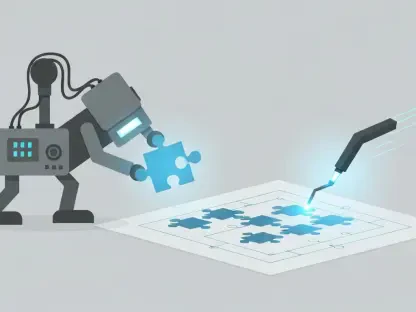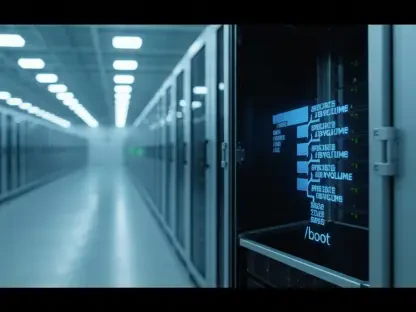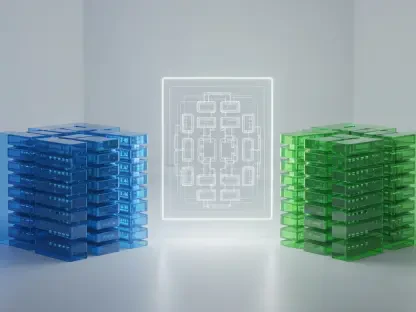Microsoft’s decision to open-source most of the Windows Subsystem for Linux (WSL) code marks a momentous pivot in the company’s evolving relationship with the open-source community. Announced at the Build developer conference, this move signifies an alignment with open-source integration, a notable strategic shift. The developer community has long advocated for this transition, highlighting a call that has resonated for nearly nine years. Originally introduced in 2016, WSL became a groundbreaking tool upon its release in the Windows 10 Anniversary Update. It has since transformed how developers operate, allowing them to run Linux distributions and leverage Linux tools and applications seamlessly within the Windows ecosystem. This strategic decision by Microsoft not only acknowledges developers’ needs but also cements Windows as a formidable platform for those who depend on Linux tools. The move strengthens Microsoft’s commitment to fostering a more inclusive and versatile development environment, aligning with its broader open-source initiatives.
The Importance of WSL in Developer Communities
The primary aim of the Windows Subsystem for Linux has consistently been to offer developers, especially those deeply engrossed in open-source work, an effortless way to run Linux utilities directly on Windows. This capability eliminates the necessity for dual-boot systems or cumbersome virtual machines, thereby boosting the efficiency of managing both Linux command-line tools and Windows applications. By enhancing these functionalities, Microsoft has made Windows a more attractive option for developers who rely heavily on Linux. The annual Stack Overflow survey in 2024 revealed that 16.8% of programmers actively used WSL, surpassing the usage rates of standalone Linux distributions like Debian and Red Hat Enterprise Linux. This statistic underscores the widespread acceptance and integration of WSL among the developer community, highlighting its role in bridging the gap between Windows and Linux environments. Developers benefit from the seamless collaboration facilitated by WSL, creating a harmonious workspace where both Windows and Linux applications can coexist without technological hindrances.
Over the years, WSL has undergone significant transformations, evolving from its initial version to the more advanced WSL 2. The first version, known as WSL 1, operated using a compatibility layer that translated Linux system calls for the Windows NT kernel. Although functional, this approach was slower and limited in scope. In contrast, WSL 2, introduced in 2019, incorporated a full Linux kernel running within a lightweight virtual machine, markedly improving performance and compatibility. This evolution has enabled users to run both shell and graphical Linux applications more efficiently, broadening the scope of what can be accomplished within this integrated environment. With these advancements, WSL has transitioned from a novel addition to Windows to an essential tool for developers, allowing a new level of productivity and interoperability between Windows and Linux systems that was previously unattainable.
Microsoft’s Commitment to Open Source
Microsoft’s choice to open-source the majority of WSL’s code is a significant acknowledgment of the community’s contributions. This move was made possible by extensive architectural changes that separated WSL from the main Windows codebase. Tools like wsl.exe, wslg.exe, wslconfig.exe, and the WSL service have been released under the MIT License on GitHub, allowing for community involvement and collaboration. However, certain integral components such as lxcore.sys, crucial for WSL 1, and specific file system redirection drivers remain closed-source due to their intricacy and proprietary nature. Prior to this release, Microsoft had already open-sourced its graphics drivers for X Server and Wayland, as well as segments of its Linux kernel code. These steps highlight Microsoft’s growing initiative to not only support but embrace open-source strategies, recognizing the power of community-driven innovation and development.
This open-source transition is a testament to Microsoft’s recognition of the community’s indispensable impact and the necessity for transparency. Pavan Davuluri, the corporate vice president for Windows, emphasized the extensive work involved in decoupling WSL from core Windows architecture, underscoring both the complexity and the company’s commitment to this undertaking. The availability of over a dozen Linux distributions, including mainstream options like Fedora, openSUSE, and Ubuntu, as well as niche choices like Arch Linux and Kali Linux on WSL, substantially broadens developers’ capabilities. The ability to execute these diverse Linux operations alongside Windows 10 or 11 enriches developers’ experiences, fostering a collaborative and robust environment conducive to innovation. Through its actions, Microsoft affirms its dedication to nurturing an open-source ecosystem that empowers developers and enhances the synergy between platforms.
Implications for Future Development
Microsoft’s recent decision to open-source a significant portion of the Windows Subsystem for Linux (WSL) code marks a transformative moment in the company’s ongoing relationship with the open-source community. This strategic shift, unveiled at the Build developer conference, reflects Microsoft’s alignment with open-source principles, responding to long-standing calls from the developer community, a sentiment that has persisted for nearly a decade. First introduced in the Windows 10 Anniversary Update in 2016, WSL was a revolutionary tool that reshaped the developer experience by enabling Linux distributions and tools to operate within Windows seamlessly. This decision highlights Microsoft’s acknowledgment of the developers’ requirements and solidifies Windows as a powerful platform for users relying on Linux tools. By open-sourcing WSL, Microsoft deepens its commitment to fostering a more inclusive and flexible development environment, aligning with its broader vision of embracing open-source initiatives and supporting diverse developer needs.









